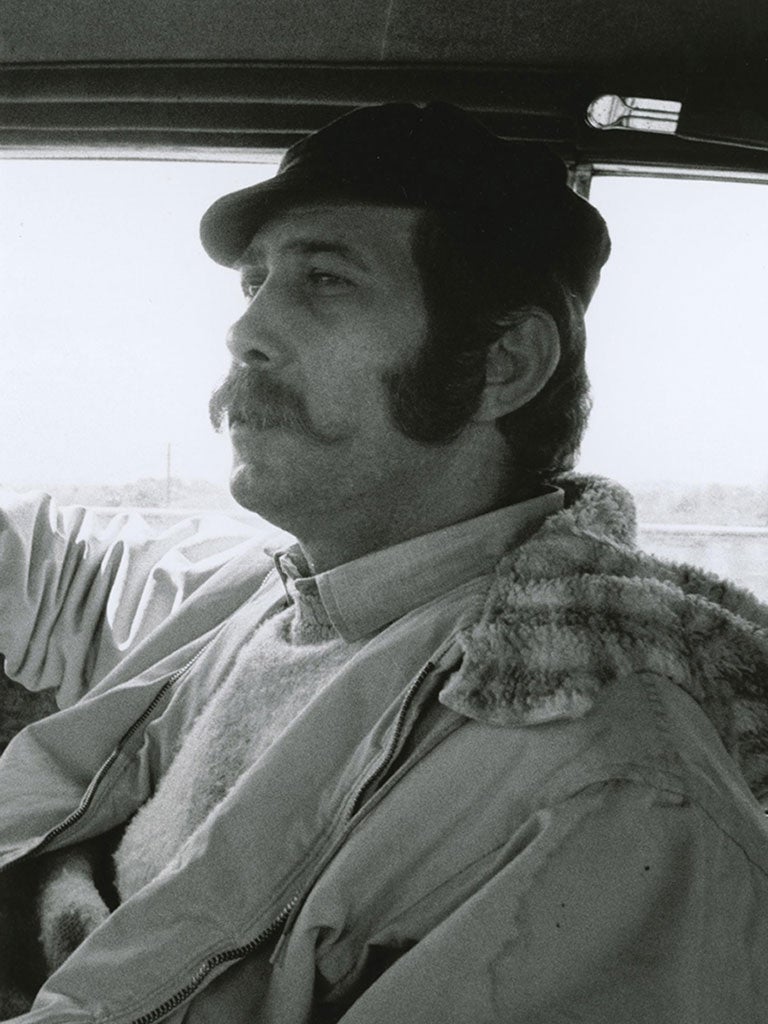Barry Feinstein: Photographer acclaimed for his work with Bob Dylan

Thanks to his work with musicians such as Bob Dylan, Donovan, Eric Clapton, George Harrison, Janis Joplin and Gram Parsons, the American photographer Barry Feinstein was rightly considered to be one of the most influential practitioners of the art of rock photography. In particular, his photos of Dylan's 1966 European tour with the Band, when the singer-songwriter was heckled after he had "gone electric", captured a performer on the edge and helped turn him into a mythical figure.
Feinstein had already shot a memorable, brooding portrait of Dylan for the cover of The Times They Are a-Changin', the musician's third album in 1964, and was commissioned by LIFE magazine to photograph the 1966 tour.
"The shows were thrilling," he recalled. "I would watch from the side of the stage and pick my moment carefully. I was in a unique position, given complete access and trust during a very special period." Feinstein enjoyed a special rapport with Dylan and once drove with him from California to New York to deliver a Rolls-Royce bought by the singer's manager, Albert Grossman. "It was really a great adventure. I saw Bob perform hundreds of times, travelled with him, often spent 24 hours a day with him. Sometimes there were thousands of people at a concert, other times it was just the two of us. I liked his work, Bob liked mine. He knew I would make him look interesting and he was interesting. He was comfortable with me and my cameras."
When Dylan and the Band performed together again in 1974, Feinstein was retained as tour photographer and came up with the striking picture of fans waving lighters that graced the cover of the joint live recording Before The Flood.
Feinstein's photos appeared on over 500 albums, and featured a variety of techniques, including a fish-eye lens for the Byrds' debut Mr Tambourine Man (1965), controversial or quirky juxtapositions as in the case of Ike and Tina Turner's Outta Season (1968, the duo caked in whiteface, biting into slices of watermelons) and Harrison's All Things Must Pass (1970, the ex-Beatle pictured surrounded by garden gnomes in the grounds of his home at Friar Park).
For Pearl by Janis Joplin (1971), the photo session took place the night before she died of a drug overdose in Los Angeles. However, the graffiti-covered toilet wall Feinstein shot for the Rolling Stones' album Beggars Banquet in 1968 proved too much for Decca in the UK and London in the US, though it was used for the 2002 CD reissue.
Born in Philadelphia in 1931, Feinstein was an only child and dropped out after a year at the University of Miami. He discovered his photographic ability while taking pictures at at the Atlantic City racetrack, where he worked in 1955. He joined LIFE as a photographic assistant but soon relocated to Los Angeles. Working as a production assistant at Columbia Pictures, he carried a camera and took unlikely photos of the studio parking lots and the Hollywood sign from the back – "the part of Hollywood that nobody thinks about or looks at," as he put it. Promoted to studio photographer, he took pictures of Marlene Dietrich, Judy Garland, Charlton Heston and Jayne Mansfield, accompanied Marlon Brando to a civil rights rally in 1963 and photographed Steve McQueen on the set of Bullitt.
Feinstein favoured an instinctive approach and excelled at the unexpected. When Magnum sent him to cover Marilyn Monroe's death in 1962, he zoomed in on the bottle of pills by her bedside. He also photographed Presidents John F Kennedy and Richard Nixon and was published in Time, Esquire and Newsweek as well as countless European publications.
In the early 1960s, Feinstein met Grossman in Los Angeles and was asked to take pictures of his charges, the folk trio Peter, Paul and Mary. He started a relationship with the singer Mary Travers, whom he subsequently married. This placed Feinstein at the epicentre of the Greenwich Village folk explosion and brought him into Dylan's orbit.
In 1967, Feinstein was one of the cameramen helping DA Pennebaker capture the Monterey Pop Festival. The following year, he directed You Are What You Eat, a counter-culture semi-documentary that featured David Crosby, Barry McGuire, Tiny Tim and Frank Zappa. In 1971, he photographed Harrison's Concert For Bangladesh at Madison Square Garden.
He remained in demand throughout the 1970s and '80s but found that the restricted access he was getting to musicians stunted his approach. In 1993, he was badly injured in a crash with a drunk driver near his home in Woodstock. While recovering, he began looking at the contact sheets in his archive and assembled Hollywood Foto-Rhetoric: The Lost Manuscript, a book of film star portraits that also incorporated 23 "cosmic prose" poems written by Dylan in the 1960s. It was published in 2008, along with Real Moments, a collection of Feinstein's photos of Dylan from 1966 that were also exhibited at the National Portrait Gallery.
"Musicians are easier to photograph than movie stars," Feinstein said recently. "They're just not as uptight."
Barry Feinstein, photographer: born Philadelphia 4 February 1931; married firstly Mary Travers (marriage dissolved; one daughter), secondly Carol Wayne (marriage dissolved; one son), 2000 Judith Jamison; died Kingston, New York 20 October 2011.
Join our commenting forum
Join thought-provoking conversations, follow other Independent readers and see their replies
Comments
Bookmark popover
Removed from bookmarks